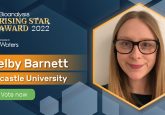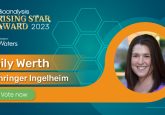Bioanalysis Rising Star Award finalist: Monique Ryan
Nominated by: Nicola Gray, Senior Lecturer in Phenomics, Murdoch University (Murdoch, Australia)
Supporting comments:
“Monique’s research highlights include nine publications in high-ranking journals, with three as first-author. During her PhD, Monique contributed to the goal of establishing large scale liquid chromatography–mass spectrometry (LC–MS) assays, optimizing an automated extraction protocol and establishing data processing procedures for harmonized lipid profiling in population studies. Monique continues to advance bioanalytical methodology to address unmet clinical needs. Beyond her technical abilities and scientific knowledge, Monique possesses impressive interpersonal skills, engaging with collaborators including clinicians, industry partners and professional staff. What sets Monique apart is her ability to work effectively with peers and supervise and mentor junior scientists. She has developed a reputation for supporting early-career researchers locally and internationally.
Monique serves on the Early-Career Members Network of the international Metabolomics Society and is the elected Early-Career Researcher lead of the Australian and New Zealand Metabolomics Society, demonstrating leadership skills and community engagement. Monique has received several accolades for her excellence in science communication, including winner of the ANZ/Sciex Early Career Research Rapid Fire competition, FameLab National Semi-Finalist, Western Australia nominee for Fresh Science 2021 and travel awards for conference presentations. Monique has a bright future, and I am certain she will continue to make significant contributions to her discipline”.
Describe the main highlights of your bioanalytical work
One of my bioanalytic work highlights was designing and developing a robust mass spectrometry method to analyze 1163 different lipid species in blood-based biofluids. It was a 2-year journey of development and optimization, ensuring it could handle various common sample handling variations such as different blood tube types, hemolysis, freeze-thaw cycles and storage conditions. This work also led to other significant discoveries during my PhD research. By delving into the lipidomic impact of non-severe burns post-injury, I uncovered a persistent lipid-based inflammation that lingers for up to 6 weeks post-healing, even when the burn appears to be fully recovered.
Furthermore, amidst this inflammation, I found that the activation of cholesterol metabolism following inflammation from burns could potentially promote healing within 2 weeks post-injury. What is more intriguing is that even upon admission to the hospital, this metabolic shift exhibits a distinct lipidomic profile compared to those experiencing delayed wound closure, suggesting its potential in predicting healing outcomes.






